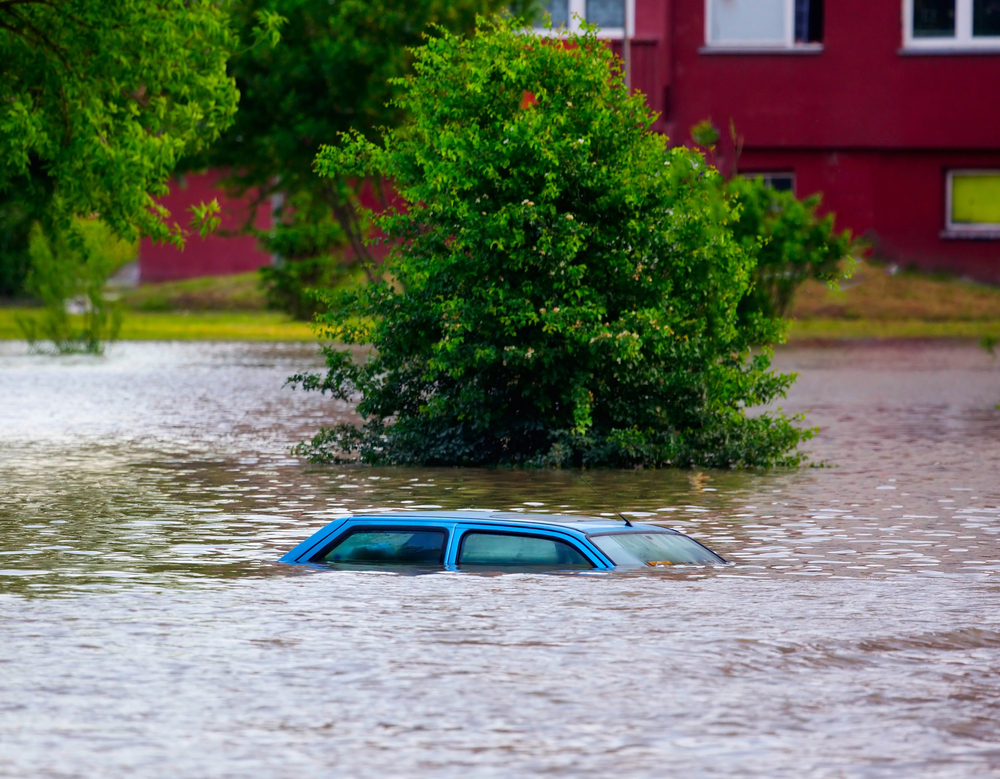Potential Energies and the Environmental Risks They Represent
Engineering dynamics tells us to pay attention to “potential energy”. That’s the energy that will be released if some restraining condition is removed. A simple example would be a glass sitting on the edge of a table. If the glass is knocked off the table, the glass crashes to the floor – turning potential energy into kinetic energy.
I posit that potential energy is a form of risk. There are plenty of environmental examples.
A Hierarchy of Risk
Let’s first look at relatively widely accepted forms of potential-energy based risk:
Fruit hanging from a tree is loaded with potential energy – for people, and for more trees. Besides, fruit from perennials is a regenerative resource.
A charged battery propels an electric vehicle with carefully packaged potential energy. And yes, there are concerns associated with lithium mining.
Now consider some middle ground where the risk causes trouble:
Every item of polyester clothing hanging in stores or online has the potential of becoming long lasting landfill and ocean waste. The overall national recycling rate for plastics and the recycled content of new polyester are both less than ten percent.
A petroleum pipeline might leak and cause environmental damage. One could argue the risk is less for a pipeline than a tanker. But that relatively small potential near water turned the Standing Rock Sioux Nation against the Dakota Access Pipeline. That risk cost pipeline investors several billion dollars.
Here are situations where high levels of potential carry the risk of disaster.
Ocean temperatures are rising. That potential energy represents enormous risk. Expect more hurricanes and storm surges. The risk of property damage and fatalities near the ocean is high. Island nations are threatened.
Oil, gas and coal reserves already under the control of fossil fuel companies represent a huge risk to our climate.
Nuclear waste stored in hundreds of locations around the world, is vulnerable to earthquakes, attractive to terrorists and a prescription for nuclear weapon proliferation. Lifecycle carbon emissions for nuclear power are between 4 and 17 times that of renewable energy such as solar electricity and wind. Updated reactor designs don’t change those fundamentals.
Mitigation
We cannot eliminate risk arising from potential energy. But we can anticipate it, respond constructively, and reduce the risk.
Moving the glass away from the edge of the table reduces risk. Likewise, people can move inland, and to higher ground. Still, the latent potential for an uncontrolled release of kinetic energy remains.
Mostly, people and governments treat symptoms and build walls to deal with high potential energy. Insurance policies. Levees. Jails. Surveillance systems. Counter weapons. These measures generally do not reduce the potential energy.
Conversely, we can address the potential energy itself:
- Shop at resale clothing stores and buy new clothing made from natural fibers.
- Buy recycled products.
- Tax non-recycled materials.
- Ban plastic shopping bags.
- Constrain the demand for coal, oil and natural gas resource extraction.
- Demand widely-accessible charging networks for electric vehicles.
- Frequent businesses with zero net emission strategies (with 2030 objectives) on their websites. For examples, check out IKEA and Tillamook.
- Advocate zero net emission strategies for your city, state, and country.
- Maintain incentives on solar, wind and geothermal energy
- Advocate a market-based system to cap carbon emissions and allow companies to trade what emissions are allowed. China, the European Union, Quebec and California are doing this now.
- Rescind Price-Anderson legislation that limits the nuclear industry’s liabilities.
Your Climate Action Plan
What can I or my family do to mitigate the risk of Climate Change? Too often we leave planning for the workplace or government, as if we are powerless. We are not. Here’s my wife and my current Climate Action Plan:
- Publish my next book on sustainability, Our Journey to Sustainability. I hope that it motivates others to take sustainable action.
- Go car free or replace our 2004 van with an electric vehicle.
- Install solar panels on the south-facing roof of our house. There is more sun in Northwest Oregon than there used to be. With incentives, we should be able to afford it within our current utility bills.
- Add more climate-friendly dishes and meals to our diet.
- Cook more stir fry meals in a wok. It takes as little as eight minutes.
- Prepare dishes with regenerative (typically perennial) ingredients, such as baked apples with honey and walnuts.
- Gazpacho, smoothies, and homemade sauerkraut require no cooking at all.
- Upgrade our solar cooker and expand our repertoire beyond apple sauce. Include grandkids and neighbors in the challenge.
- Gather tips to adapt to Climate Change from Now That You Know, a Spaceship Earth publication available free on its website.
The consequences of unleashed potential energy can be severe. We are already witnessing hurricanes, global record temperatures and droughts. We already have giant ocean gyres filled with swirling plastic. As responsible crew on Spaceship Earth, let’s mitigate the underlying risk while and where we can.
This article was inspired by “Surprises: As the Realization of Risk,” by Malcolm Peart in CERM® Risk Insights.
Jon Biemer’s upcoming book is Our Journey to Sustainability: How Everyday Heroes Make a Difference. Jon is registered as a professional Mechanical Engineer in the state of California and a member of the Society of Environmental Journalists. His previous book is Our Environmental Handprints: Recover the Land, Reverse Global Warming, Reclaim the Future. Both books can be purchased from on-line booksellers.


